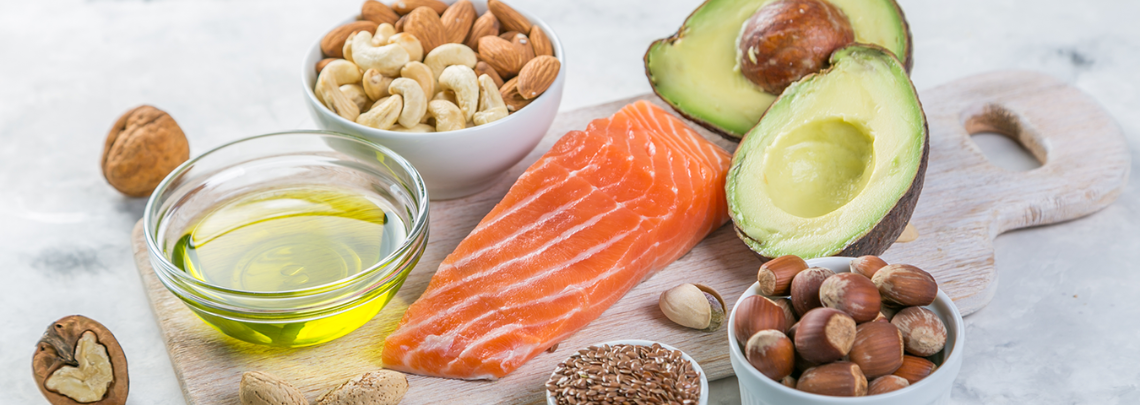How To Cut Carbs
Carbohydrates are an important nutrient found in many types of foods and is made up of three components: fibre, starch, and sugar.
Fibre and starch are complex carbs, while sugar is a simple carb. Simple carbs, such as those found in your favourite cookies, lollies and chips may be tasty and provide that feeling of comfort but provides no nutritional value for your health in the long run.
If you consume more carbs than can be used or stored, your body converts these to fat cells for use later. But if this energy is not needed, it continues to stay in the fat cells. A build-up of this excess from each meal may lead to weight gain over time. With carbs so pervasive and so hard to resist, it’s almost impossible to completely say no to carbs. But studies have shown that low-carb diets can:
- Reduce a person’s appetite
- Lead to them eating fewer calories
- Help them to lose weight more than in other diets.
A low-carb diet is one that restricts carbohydrates, found in sugary foods, pasta, and bread. Instead of eating carbs, you eat whole foods including natural proteins, fats, and vegetables.
Here are a few simple tips and tricks to help cut carbs without feeling as if the diet is restrictive.
1. Eliminate Sugar-Sweetened Drinks
Even healthy drinks, such as fruit juice, may contain a large amount of sugar. Fruit juice is loaded with simple carbs and refraining from drinking it is a good way to lower carbohydrate intake.
Besides fruit juice, sugar-sweetened beverages such as soft drink, energy drink, sweetened tea and coffee are very unhealthy. They’re high in added sugar, which is linked to an increased risk of insulin resistance, type 2 diabetes and obesity when consumed in excess.
If you made up your mind to kickstart a low-carb diet, avoiding sugar-sweetened beverages should be the top of your list. Find alternatives to sugary beverages such as sparkling water or infuse water with berries for a natural sweetness that also provides vitamins and minerals. Otherwise, try adding a small amount of zero-calorie sweetener such as Sunrider’s SunnyDew® to enhance the flavour of foods and drinks if you want a refreshing and tasty beverage.
2. Stay Satiated by Filling Up on Healthy Fats
The idea of a “diet” is not usually synonymous with “eat more fat,” but when you’re reducing your carb intake, you’ll need to make up those calories and nutrition elsewhere.
Healthy fats are categorised into Omega-3 fats and monounsaturated fats. Omega-3 fats are a type of polyunsaturated fatty acid that helps to lower cholesterol levels and support heart health, while monounsaturated fats help to increase HDL, the “good” cholesterol in your body.
Preparing low-carb foods with healthy fats can enhance flavour, promote feelings of fullness, and improve your health. So, when you are heading out for your grocery shopping the next time, remember to include these foods in your grocery list:
- Olive oil/coconut oil
- Nuts
- Avocado
- Fatty fish
- Flax seeds
Healthy fats not only add flavour but gives you enough energy for the day ahead, as fat replaces some carbs and typically makes up over 50% of calories on a low-carb diet.
3. Go for Complex Carbohydrates
Not all carbohydrates are created equal, so the key is choosing the right carbs instead of avoiding them completely. Complex carbs pack in more nutrients than simple carbs. They’re higher in fibre and digest more slowly. This also makes them more filling, which means they’re a good option for weight control.
That is why when you’re choosing between carbs, the ones you choose makes a difference.
Be sure to include the following complex carbohydrates as a regular part of your diet:
- Whole grains such as quinoa, brown rice, and whole-wheat pasta
- Fibre-rich vegetables such as broccoli, carrots, beets, spinach, and zucchini
- Fibre-rich fruits such as apples, berries, and bananas
Consider rounding up your meal with Sunrider’s Nuplus ®, this powerhouse powder is made from whole foods which fill in your nutritional gaps with micronutrients to balance your body.
4. Load Up on High Protein Food
When you cut back on carbs, you’ll need other foods to help you stay satiated. It is important to choose high-quality protein sources (not processed meats, which can also contain sugar and other carbs).
Protein triggers the release of the “fullness hormone” which reduces hunger, helps fight food cravings and protects muscle mass during weight loss.
Protein-rich foods will help keep you full and offer many additional health benefits. Many sources of protein are also rich in amino acids, antioxidants, and other essential nutrients, such as:
- Eggs
- Greek yoghurt
- Nuts and seeds
- Legumes, beans, and lentils
- Soy protein, tofu, and tempeh
- Lean meats, such as fish and chicken
These foods also help to boost metabolism and maintain healthy blood sugar levels after eating so you can avoid slipping into a post-lunch “food coma”.
Disclaimer: While a low-carb diet has many proven benefits, it’s still important to reach out to your nutritionist or doctors about the diet plans if you have any medical history or current medical condition. Discuss any changes in medication and relevant lifestyle changes with your doctor.
